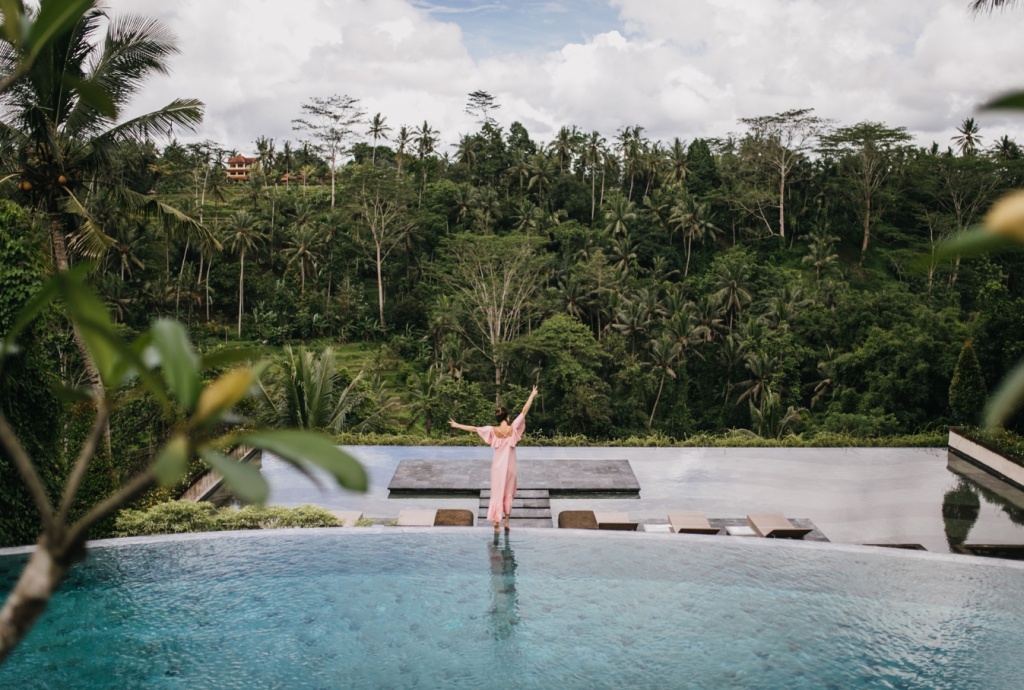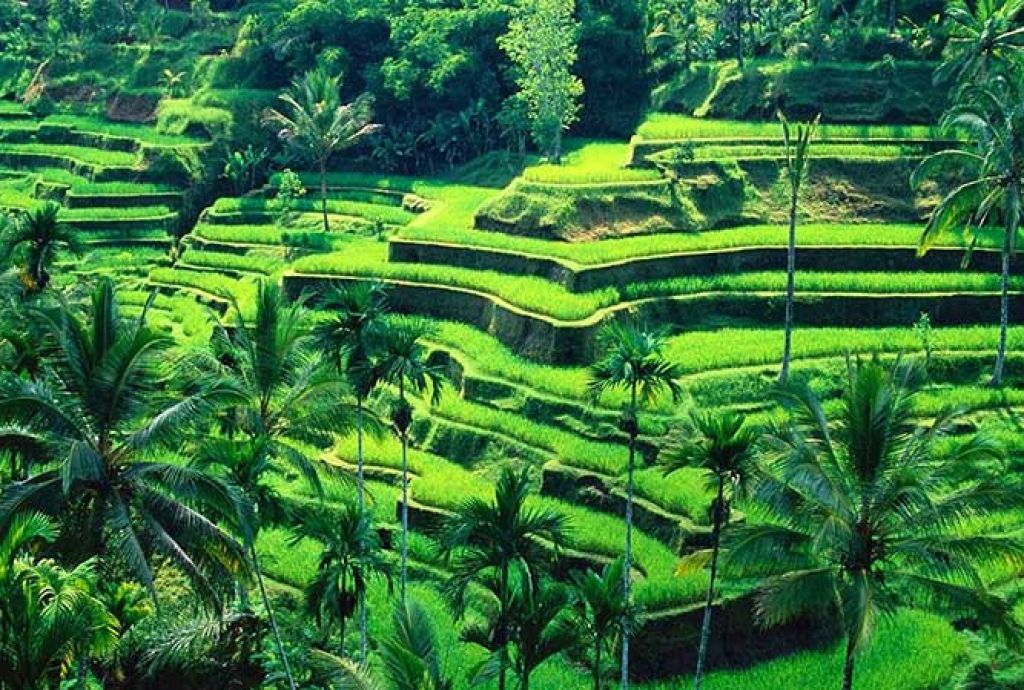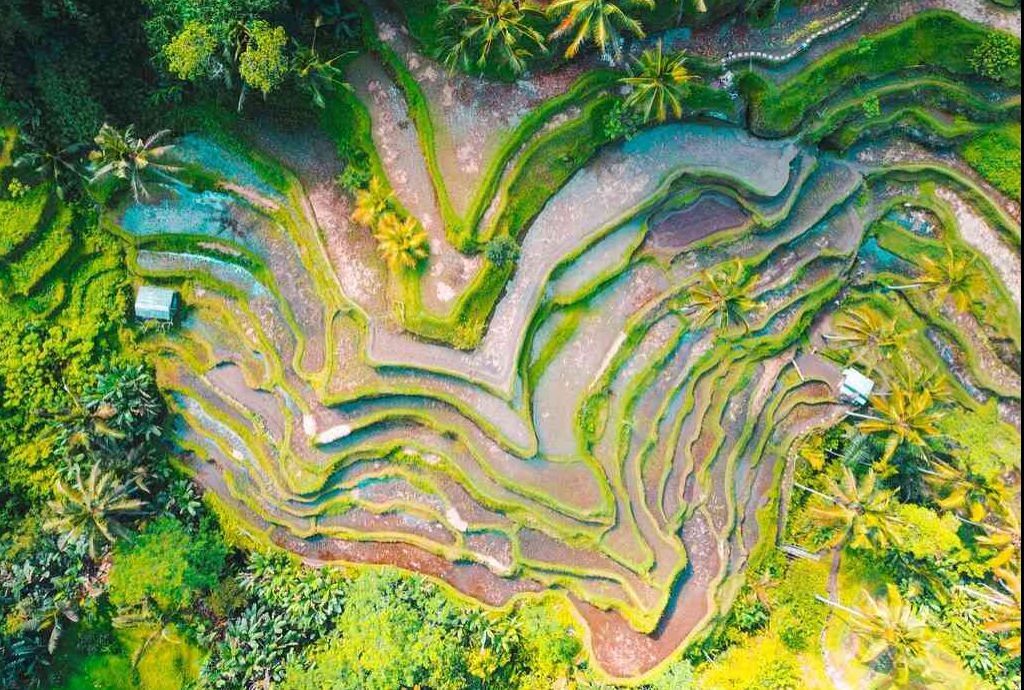
Exploring Tabanan’s Rice Terraces & Hidden Temples
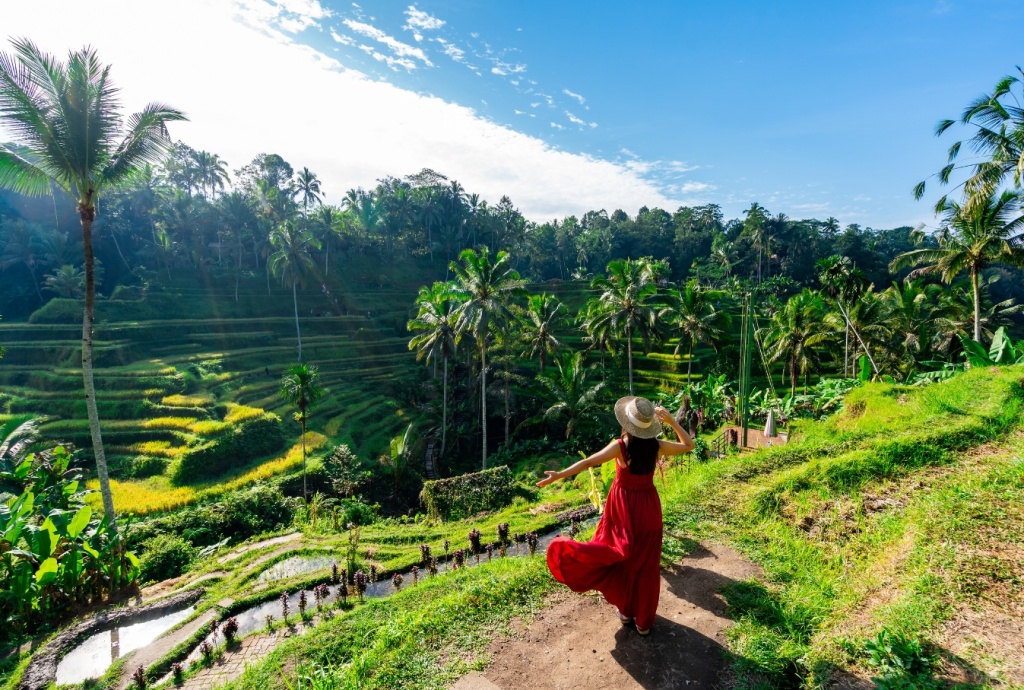
The Allure of Tabanan’s Green Majesty
Tabanan, often called the “Green Heart of Bali,” lies in the island’s western region, about an hour and a half from Ubud or Denpasar. It’s a land of misty hills, emerald rice fields, and ancient temples that rest quietly between forested mountains. Away from the crowded tourist centers, Tabanan offers travelers a pure taste of Balinese life — calm, spiritual, and close to nature.
Here, you’ll walk among rolling terraces carved by centuries of devotion and find temples hidden behind lush forests in villages like Penebel, Pupuan, and Baturiti. Tabanan invites you to slow down, breathe deeply, and discover Bali’s timeless beauty.
Why Tabanan Is Called Bali’s “Green Heart”
A Land of Endless Rice Terraces
Stretching across gentle hills and river valleys, Tabanan is known for its endless rice fields that glow in every shade of green. Farmers in the area still rely on traditional techniques to maintain their terraces, particularly in Jatiluwih Village (Penebel District) and Belimbing Village (Pupuan District). These landscapes change with the seasons, from vivid emerald during planting to golden hues before harvest — creating a living painting that captures Bali’s rural essence.
The Subak System: Harmony Between Nature and Spirit
These terraces are part of the ancient Subak irrigation system, a UNESCO World Heritage Site that originated in Tabanan. More than a network of canals, the Subak represents Tri Hita Karana — harmony between humans, nature, and the divine. Nowhere is this philosophy more visible than in the perfectly balanced terraces of Jatiluwih, where farmers still make daily offerings to the water temples that sustain their crops.
Top Rice Terraces to Visit in Tabanan

Jatiluwih Rice Terraces
Located in Jatiluwih Village, Penebel District, the Jatiluwih Rice Terraces are the crown jewel of Tabanan. Covering about 600 hectares on the southern slopes of Mount Batukaru, they offer panoramic views, peaceful walking paths, and a deep sense of calm. Visitors can follow well-marked trails or join local guides who share stories of farming rituals and the Subak’s history. The area is cool, serene, and one of the most photogenic spots in Bali.
Belimbing Rice Terraces
About 30 kilometers west of Jatiluwih, in Belimbing Village, Pupuan District, you’ll find another breathtaking landscape. The Belimbing Rice Terraces are less crowded, making them ideal for travelers who seek quiet and authenticity. These fields are surrounded by clove trees and small waterfalls that add to their charm. Local farmers often wave as you pass, embodying the warmth of rural Bali.
Yeh Gangga Fields and Coastal Views
For a completely different view, head south toward Yeh Gangga, near Tabanan Town. This is one of the few places where rice fields meet the sea. The sight of green terraces descending toward black volcanic sands and crashing waves creates a surreal contrast. Yeh Gangga is also known for its peaceful beaches and horseback riding at sunset, a perfect combination of culture and coastal beauty.
Hidden Temples and Sacred Corners of Tabanan
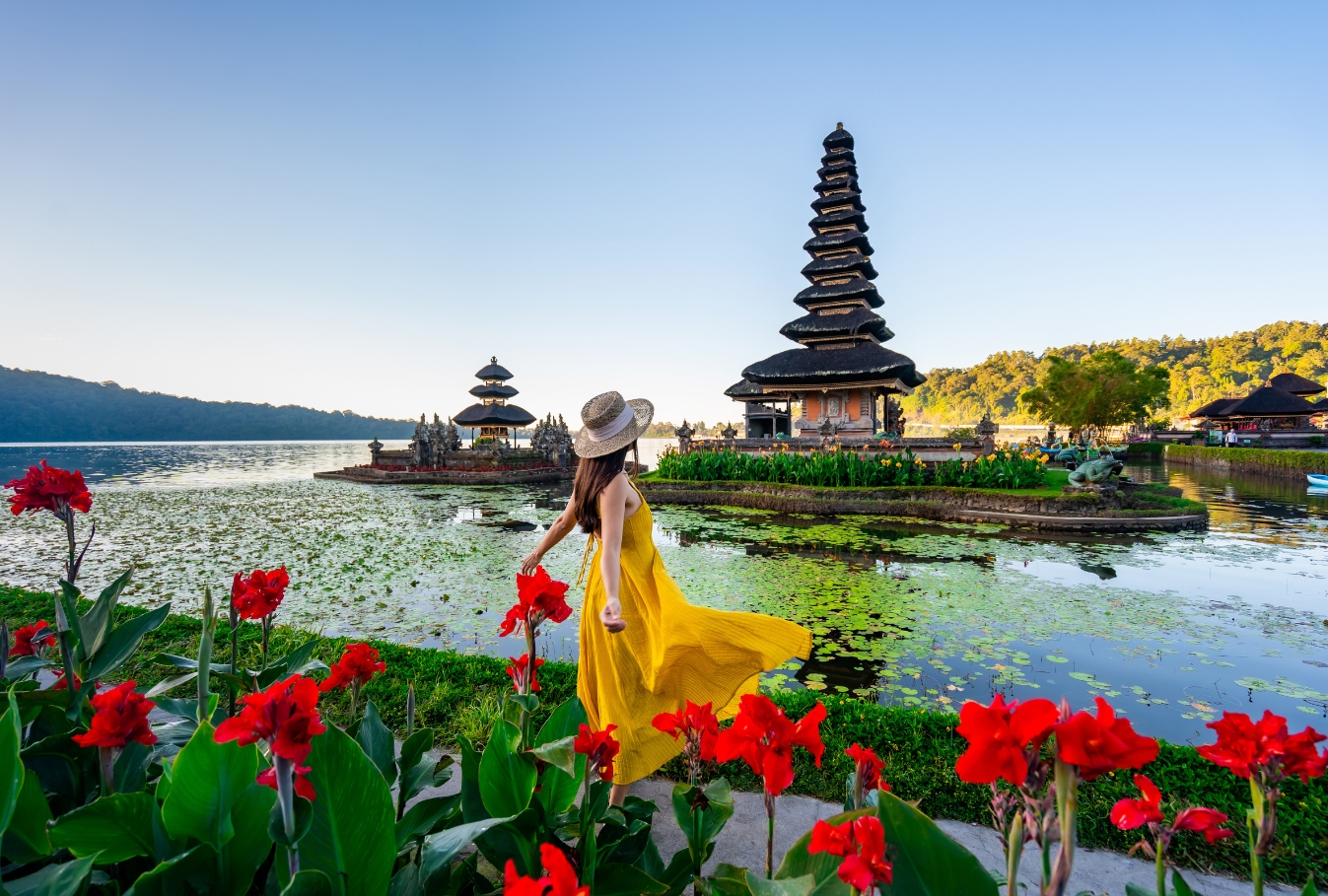
Pura Ulun Danu Beratan: Temple on the Lake
Situated in Candikuning Village, Baturiti District, Pura Ulun Danu Beratan rests gracefully on the shores of Lake Beratan in the Bedugul Highlands. Its floating pagoda-like shrines mirror beautifully on the calm lake surface, honoring Dewi Danu, the goddess of water and fertility. The temple’s setting against misty mountains is among Bali’s most iconic scenes.
Pura Luhur Batukaru: Temple in the Mist
Nestled in Wongaya Gede Village, Penebel District, on the forested slopes of Mount Batukaru, this ancient temple is often shrouded in cool mountain mist. It’s one of Bali’s nine directional temples and is dedicated to Mahadewa, the guardian of the western region. The serene atmosphere and surrounding rainforest make Pura Luhur Batukaru a powerful spiritual retreat.
Pura Tamba Waras: Healing and Legends
In Sangketan Village, near Penebel, lies Pura Luhur Tamba Waras, a temple believed to have miraculous healing powers. Local legend says it was built on the spot where a Balinese king once recovered from illness. Today, villagers come here to pray for physical and spiritual balance amid the tranquil forest surroundings.
Nature Exploration and Short Treks in Tabanan

Jatiluwih Trekking Trails
The Jatiluwih area is not only a UNESCO site but also a paradise for short treks. Located in Penebel District, these trails lead you through rice paddies, bamboo groves, and small traditional villages. Each route offers breathtaking views of Mount Batukaru and the layered terraces below. The cool air and peaceful setting make it an ideal escape for both beginners and experienced walkers.
Mount Batukaru Hike
Rising 2,276 meters above sea level, Mount Batukaru dominates the landscape of Tabanan. The main hiking route starts from Wongaya Gede Village, near Pura Luhur Batukaru. The trek takes about five hours to the summit and rewards climbers with views stretching from Bali’s southern coast to the Java Sea. It’s a sacred mountain, so visitors are encouraged to hike respectfully and avoid loud noise.
Waterfalls and Secret Forest Paths
Hidden within the lush interiors of Tabanan Regency are several small waterfalls worth exploring. In Pujungan Village (Pupuan District) lies Blahmantung Waterfall, a dramatic cascade tucked within coffee plantations. Closer to the coast, in Antap Village, Selemadeg District, stands Pura Luhur Srijong, where a smaller waterfall meets the sea near the temple grounds. Both offer serene, uncrowded experiences for nature lovers.
Where to Stay
Accommodation in Tabanan complements its natural beauty. Stay in eco-lodges or village homestays around Jatiluwih, Belimbing, or Baturiti for a peaceful retreat. Many eco-resorts here promote sustainable tourism, allowing guests to participate in rice planting or cooking classes with local families.
Conclusion
Exploring Tabanan’s rice terraces and hidden temples is more than a trip — it’s a journey into Bali’s living culture. Every terrace, trail, and temple reflects the island’s deep respect for nature and spirit.
Whether you’re trekking through Jatiluwih’s green waves, praying at Pura Batukaru, or watching the sunrise over Belimbing Village, Tabanan offers a harmony that lingers in memory long after you leave.
Topic Categories
- All 339
- Uncategorized 6
- Bali Villa 27
- Bali Politics 6
- Bali News Update 7
- Bali Shopping 3
- Bali Tourism 46
- Bali Spirituality 2
- Bali Beauty and Fashion 0
- Bali History and Culture 23
- Bali Property Appraisal 1
- Bali Property Financing 3
- Bali Property Insurance 1
- Bali Property Management 5
- Bali Environment 11
- Bali Pets 2
- Bali Health and Wellness 10
- Invest in Bali 23
- Bali Local Services 5
- Bali Food & Dining 11
- Bali Home Improvement & Design 6
- Bali Legal Tips 7
- Bali Neighborhood Guides 11
- Bali Property Market Trends 14
- Bali Property Advice 60
- Bali Attractions 21
- FAQ 2
- Living in Bali 44
Topic Tags
- All 339
- Uncategorized 36
- Villa for sale Umalas 3
- Villa for sale Kerobokan 3
- Villa for sale Oberoi 3
- Villa for sale Pererenan 3
- Villa for sale Batu Bolong 3
- Villa for sale Berawa 3
- Villa for sale Sanur 3
- Villa for sale Seminyak 3
- villa for sale Ungasan 3
- villa for sale Jimbaran 3
- villa for sale Nusa Dua 3
- villa for sale Pandawa 3
- Kerobokan 3
- Bali market report 1
- Villa for sale Canggu 5
- Villa for sale Uluwatu 5
- Bali Rentals 2
- Buying Process 6
- Labuan Bajo 0
- Bali Hospital 3
- Bali School 3
- Bali Beach 11
- Co-working Space 4
- Petitenget 3
- Australia 0
- China 2
- Bali Wedding 1
- Bali Flights 4
- Retire in Bali 5
- Nyepi 2
- Bali Villa Sale 20
- Bali Visa 4
- Bali Travel 28
- Villa Rental 9
- Airbnb 0
- PT PMA 3
- Bali Zoning Law 1
- Bali Tax 3
- Bali Property 52
- Double Six 0
- Sunset Road 0
- Nyanyi 3
- Legian 4
- Beach Club 5
- Oberoi 3
- Batu Bolong 3
- Batu Belig 2
- Business 3
- Legal 10
- Investment 39
- Tourism 60
- Travel 23
- Jimbaran 8
- Denpasar 2
- Seseh 4
- Eid al Adha 1
- Ascension Day 0
- Easter 0
- Vesak 0
- Islamic New Year 0
- Eid al-Fitr 1
- International Labor Day 0
- Independence Day 2
- Day of Silence 0
- Galungan Day 1
- Valentine 2
- Christmas 5
- New Year 4
- Lunar New Year 2
- Bali Market Trends 12
- Bali Art & Culture 18
- Bali Home Design 9
- Bali Health & Wellness 11
- Bali Food and Dining 14
- Bali Pets 3
- Bali Lifestyle 43
- Rice Field Front 1
- Jungle View 1
- River Front 0
- Rice Field View 5
- Ocean View 4
- Private Pool 0
- Fix and Flip 1
- Fixer-Upper 0
- Hotel & Resort 3
- Guest House 0
- Street Front 0
- Residential Zone 0
- Touristic Zoning 0
- Freehold 4
- Long Lease 7
- Short-Term 1
- Minimalist Villa 0
- Luxury Villa 13
- Turnkey Villa 3
- Residential Complex 0
- Exclusive Listing 1
- Off-Plan Property 4
- Studio 0
- Loft 0
- Apartment 8
- Villa 16
- Land 6
- Beachfront 4
- Family Villa 0
- Retirement Villa 1
- Investment Villa 31
- Digital Nomad 0
- Commercial Property 3
- Eco-friendly 0
- Contemporary Style 0
- Modern Style 1
- Javanese Style 0
- Rustic Style 0
- Traditional Style 0
- Bohemian Style 0
- Mediterranean Style 1
- Balinese style 1
- Nusa Penida 1
- Lombok 1
- Gili Island 3
- Amed 0
- Tabanan 9
- Cemagi 4
- Nusa Dua 9
- Sanur 4
- Umalas 7
- Berawa 5
- Ubud 6
- Tanah Lot 3
- Kuta 7
- Pererenan 6
- Uluwatu/Bukit Peninsula 28
- Seminyak 9
- Canggu 30
Relevant Articles you may like
About Bali Home Immo
Established in 2009, Bali Home Immo is the first real estate agency in Canggu with more than 7000 Bali properties listed in its database. Bali Home Immo (PT. Bali Properti Kontruksi) is a licensed property agency (SIUP-P4 certified) located in Bali, Indonesia and have been successfully operating as a trustworthy and reputable real estate agency with more than 13 years of experience. Long-standing partnerships and a committed, dedicated team are the driving force behind the work that takes place every day at Bali Home Immo.
As a member of the Real Estate Broker Association of Indonesia (AREBI), Bali Home Immo Property offers luxury real estate across the region to a local and international client base. Catering to a wide range of property requests, the team will ensure they can find a property, land or residential listing, to match each client’s personal requirements.
We have curated a wide selection of properties ranging from the land for sale, villas for sale and rent, as well as commercial space rental in Bali's most in-demand areas including Canggu, Seminyak, Pererenan, Umalas, and Uluwatu. Not only Bali, but our connection also reaches other popular destinations in Indonesia including Gili Islands, Lombok, Labuan Bajo, and more.
We also provide professional marketing services that will showcase the best of your Bali properties to more than +160k social media followers and maximise the potential to find buyers looking at villas for sale in Bali. With a thorough knowledge of the Bali property market inside-out, we deliver the most professional and data-driven valuation of your property at the most competitive price for your Bali properties.
Our expertise in the local market and extensive network affiliated with 93 local and international partners including Goplaceit.com, Rumah123, Kangaloo, Luxury Estate, and many more will also help you bring global exposure to your real estate investment and find your dream Bali property. Looking to buy villas for sale in Bali? Check out our online catalogue of Bali real estate and follow us on social media for updates.
Map
Send an Enquiry
Property Search
Sell/Rent My Property
Please fill this form and our listing agents will contact you to visit your property and/or give you a price valuation







